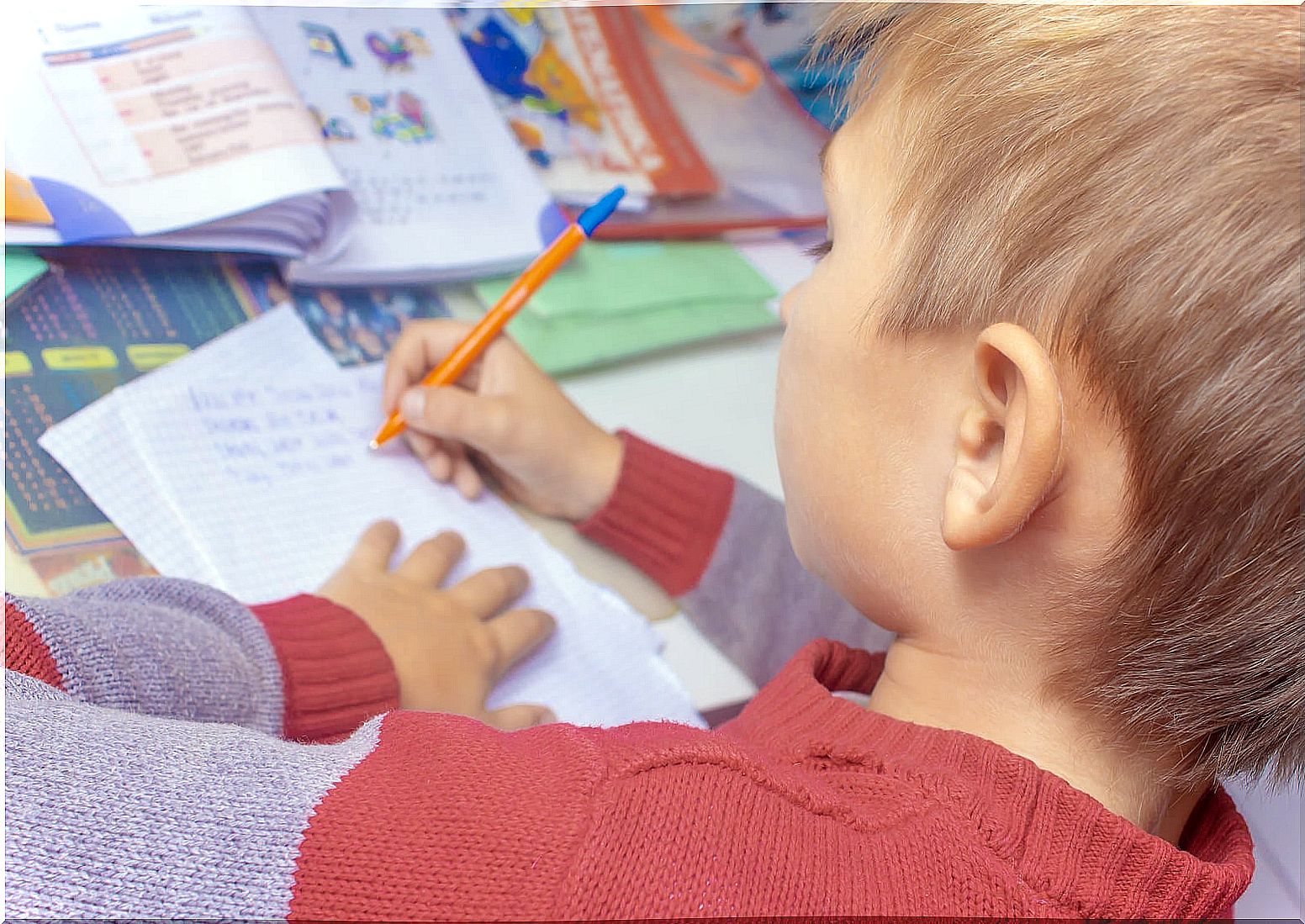4 Benefits Of Handwriting For Children

We live in the digital age, where almost every day we use the keyboard of an electronic device to search the internet, write a document, fill out a form, etc. In short, to write. Typing has become an essential activity of today’s daily life, but for this reason we cannot forget about handwriting.
Today’s children, like those of past generations, must learn to write by hand, as it is a skill that provides countless benefits for child development. Read on and find out what those benefits are!

4 benefits of handwriting for kids
The action of drawing letters on paper involves a multitude of skills and learning that are carried out unconsciously and that are beneficial for integral development. Here is a list of some of the most important benefits of handwriting.
1. Handwriting favors the acquisition of motor skills
To be able to write by hand correctly, it is necessary to have a series of motor skills, such as the following:
- Holding the pencil firmly.
- Eye-hand coordination.
- Control of straight and curved lines.
The acquisition of these skills favors the development of fine motor skills, that is, the ability to carry out small, coordinated and precise movements.
2. Improves concentration
Another great benefit of handwriting is that it requires a high level of concentration. So when children pick up a paper and a pencil to write, they are forced to pay close attention to the task, avoiding making mistakes in spelling, writing, and letter tracing.
3. Boost memory capacity
According to a study recently published in the journal Frontiers in Psychology , when children and young people type manually, they show more brain activity than when they do it on a keyboard. This type of writing helps them retain and evoke information more easily, so that memory capacity is enhanced.
4. Facilitates learning to read
Writing and reading are closely related. So much so that learning and perfecting one of these skills benefits the development of the other.
When writing by hand, the children have to think about each of the spellings they want to reproduce and how to carry out the corresponding manual gesture. Thus, little by little and in a natural way, the little ones become familiar with the letters of the alphabet, which makes them read more quickly and efficiently.
On the future of handwriting …
It is undeniable that new technologies are revolutionizing teaching. In fact, for years now, one of the key competences of the educational curriculum has been digital competence, that which implies teaching children, from the first years of schooling, to properly relate to information and communication technologies.

One of the skills that children must acquire in school is knowing how to use a computer and, therefore, knowing how to write on it with agility. But, to achieve this objective, they must first learn to write by hand and, once they acquire enough practice to trace the letters with ease, they will enter the world of typing.
Thus, as stated by Dr. Berninger, what is intended “is to teach children to be hybrid writers” , so that they can cope with the demands of current and future society.
It is clear that times have changed. Technological advances mean that less and less hand is written, but that does not mean that it is a skill that has to disappear or be replaced completely.
Handwriting is a human skill that cannot be lost. To avoid this, it is necessary to teach this type of writing to children from early childhood and encourage its use on a day-to-day basis.










